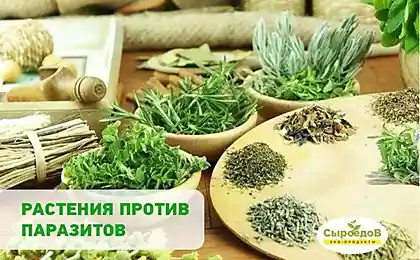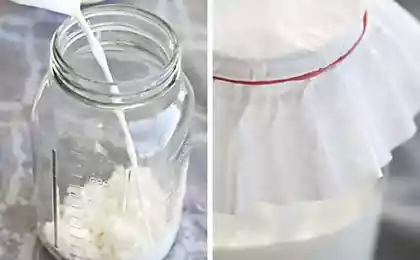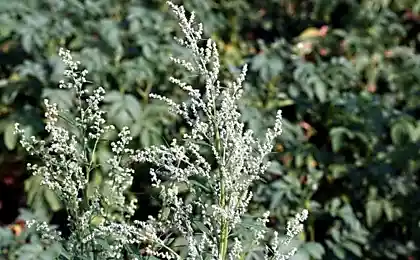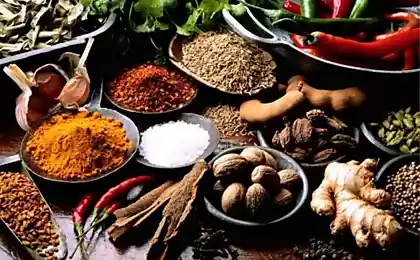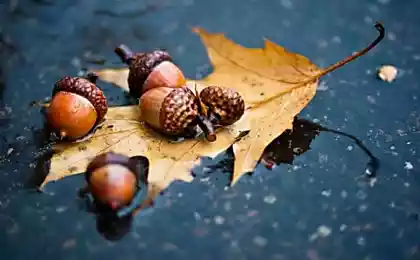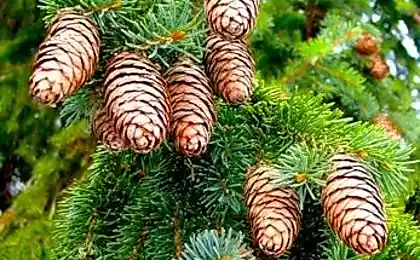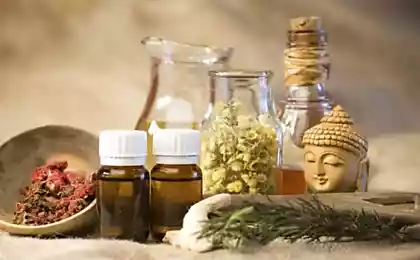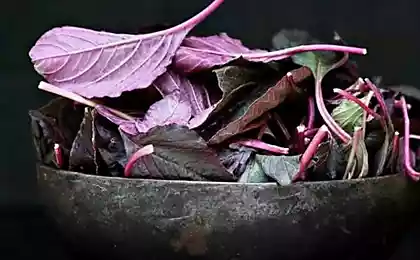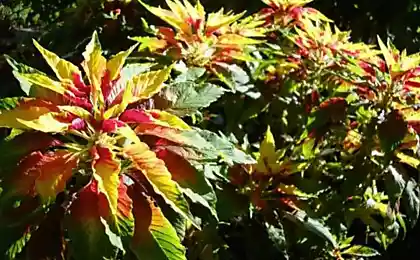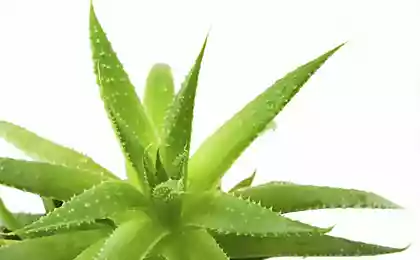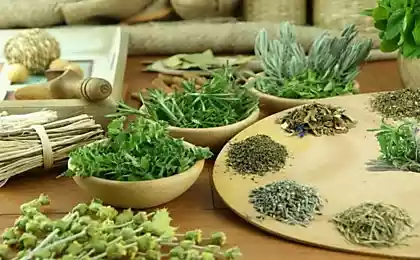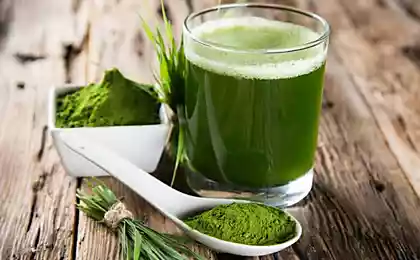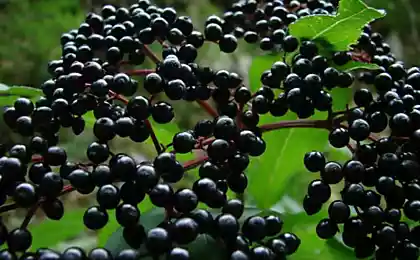584
Nard: the unique healing properties
Elecampane is a perennial tall plant with many-headed rhizome, which depart from a few thick and thin adventitious roots.
The stem is erect, 100-150 cm tall, grooved, covered with short hairs, simple, and only at the top, branching, ends baskets. The leaves are alternate, the lower large, up to 50 cm long, lanceolate with long petioles, upper – sessile, ovate or oblong-ovate. Sheet edge unevenly toothed. Leaf blades green above, slightly pubescent, bottom – velvety-tomentose. The flowers are yellow, collected in large baskets 7-8 cm in diameter. The fruit is quadrangular brown achene with a Pappus, which is twice as long as her.
From fragrant roots of elecampane prepared puddings, jelly, stewed fruit, marmalade, jams. Used as an aromatic spice for canning.
Blooms in July – September. The fruits ripen in August – September.
Grows along the banks of rivers, lakes, in wet meadows, among shrubs in the deciduous forests. Particularly common in the Chernozem zone of the European part of Russia. Elecampane is very popular among the people and it is often grown in gardens, especially to the North of the Chernozem zone, where he often runs wild.
Forty six million two hundred eleven thousand one hundred one
Collect all the underground part elecampane in August – October or early spring, when it shows its first leaves. Plants are dug with shovels, shake the ground, cut off the stems or break off the them at the point of attachment to the rhizome. Underground organs quickly washed with water and cut into pieces with a length of 3-20 cm, cut the roots of a thickness of less than 0.5 cm For the rapid recovery of shrubs a few pieces of the rhizome on the top of which you have kidney regeneration, buried in the ground, not buried them the upper part of the kidneys shall be covered with a layer of earth not more than 1-2 cm for the same purpose on the area of 10-15 m2 leave one well-developed plant for seed reproduction.
The collected materials are dried under sheds, in barns, in attics or in the dryer at a temperature not exceeding 50° until then, until the rhizomes (like thicker) will become solid, and the roots brittle.
Prepared raw material is the rhizome and root of elecampane, is a mix of shapeless rhizomes and roots is cylindrical with a length of from 2 to 20 cm, a thickness of 0.5 to 3 cm, outside predominantemente, very hard, gray-brown color. On a fresh fracture clearly visible brownish brilliant point (the reservoir with the resin and essential oil). It is particularly felt a peculiar aromatic odor. The taste of medicinal herbs – spicy, bitter.
Elecampane roots store in the boxes lined with paper inside.
The operation and administration Is taken to have expectorant, improves digestion and metabolism, easy sudorific and diuretic, causing monthly. The scientific medicine uses of inula as an expectorant. In folk medicine is widely used by them. He really believe and attribute it to powerful medicinal plants.
Water extract of roots and rhizomes of elecampane (5-10 g per 200 ml of water) have anti-inflammatory, antiseptic, expectorant, choleretic and a slight diuretic effect, reduce intestinal peristalsis, reduce the secretion of gastric juice, improve the appetite. I think that the main biologically active substance of elecampane is alantolacton and related terpenoids of essential oil. Substances associated complement and extend the range of its action.
In this regard, nard mainly finds application in diseases of the respiratory tract (tracheitis, bronchitis, cough with phlegm); gastrointestinal tract (gastritis with increased secretion, gastritis, diarrhea non-infectious origin, without appetite, hemorrhoids), liver diseases, and skin diseases (noninfectious) and hard-to-heal wounds (without soak). Alantolacton effect on ascarids approximately 25 times stronger than santonine. Recommended for irregular and painful menstruation. Positive effect in diseases of the kidneys and liver, and hemorrhoids.
A decoction of the root is prescribed for rinsing with inflammation of the gums, in the treatment of difficult healing, but not weeping wounds externally in the form of rinses, lotions, compresses, baths. In the latter case, take 100 grams of roots boiled in 1 liter of water, insist 4 hours, carefully strain through cotton.
Tablets allanton apply with gastric ulcer and duodenal ulcer.
The roots and rhizomes of elecampane included in the fees prescribed for dry pleurisy, cardiac asthma, prostatitis, ulcerative colitis, cholangitis, epilepsy, graves ' disease, cystitis. Used in folk medicine in the treatment of rheumatism, diabetes, dropsy, eczema and other skin diseases. In skin diseases, especially scabies, a strong decoction of elecampane wash the body.
At slackness of the stomach Drink three times a day for half a glass napara from 30 g of elecampane 1 liter of water. Soar in an oven the whole night.
For convalescents, feeble, infirm people Recommended "devyatilov wine", approximately 50 g 2 times a day. A bottle of (0,5) ports take 12 g of fresh chopped root elecampane and cook it for 10 minutes.
At katare guts, and at the lowered acidity of a stomach Devjasilovyj the broth to cook not on port, and red wine Cahors and take daily three glasses of wine (approximately 50 g); best taken after meals.
At cold During severe cold, when the patient cough, runny nose, when the patient breathes heavily, he is put to bed, put the banks, rubbed with turpentine and instead of tea give to drink a decoction of rhizomes with roots of elecampane and Angelica, taken in 15 g (approximately) per liter of water. Pour cold water and bring to a boil, boil for 10 minutes.
With a weak development of children Poorly developing children are given during the day to drink 2 glasses of broth of rhizomes with roots of elecampane, gentian grass and yarrow herb 5 g of each to a pint of water; the mixture is boiled for 10 minutes and extracted. Improves appetite, promotes the secretion of sputum.
With stomatitis 20 g of the roots boil 5 minutes in 200 ml of water, to insist 4 hours per heat. Drink 1 tablespoon 3-4 times a day half an hour before meals.
In cancer of different localization Take 200 g of dry root, it is good to grind (to first grind the ax, and then in a coffee grinder). The resulting grinding thoroughly mixed with 500 grams of fresh honey. To insist night. Take 1 tablespoon 3 times a day 15 minutes before meals.
In tuberculosis Cook 2 cups of pulp from fresh root, add 0.5 liters of vodka, insist 10 days. Make gruel with 1 tablespoon before each meal for 2-3 months.
If you are allergic (cold, drug, food) Mix equal parts of elecampane, licorice and marshmallow root. 2 cups cold water put 2 teaspoons of the mixture, cover and to insist 8-10 hours (to put for the night). Drink 1/3 Cup of slightly warmed, with honey.
For hypertension Mix equal parts of elecampane roots and flowers of tansy. 1 teaspoon of seeds pour 2 cups boiling water, hover for 1.5 hours. Drink half a Cup 3 times a day for 2 hours before eating.
For rheumatism Mix equal parts of the roots of elecampane and burdock (in parts by weight). 1 tablespoon of the mixture pour 1 Cup of boiling water, to insist in heat of 20 minutes, drain. Take 1 tablespoon 3 times a day 20 minutes before meals. Use the infusion for warming compresses. It is highly effective in rheumatoid arthritis!
When the cones on the toes Soar in a hot steamed roots of elecampane 12 consecutive days. The bumps will resolve. (It would be nice at the same time rubbing the tincture of elderberry.)
For scabies A handful of chopped rhizomes with roots devjasila boiled 15 minutes in 4-5 spoons of pork unsalted baked fat. Filter in Bank, and with this ointment for the night grease the places infected with scabies. Of course, will be true if the same ointment mixed with 2 tablespoons of pure birch tar, with the same dose of sulphur. This ointment is rubbed over a period of several days, being washed away after her strong decoction of elecampane: 50 g per 1 liter of water. The itch recovered even the most started.
A General tonic 50 g of dry powdered rhizomes elecampane pour 1 liter of water, boil 20 minutes, strain, add 0.5 cups fruit or fruit juice and 100 g sugar (for patients with diabetes in the broth add honey). Used as a General tonic.
Wine of elecampane From the roots of inula can be prepared very useful devyatilov wine. To do this, 1 tbsp chopped fresh root pour 0.5 liters of Cahors wine or port wine, cook for 10 minutes, adding 1 tbsp. of honey.
Take 50 ml after meals as a General tonic in various diseases. The wine has a beneficial effect on the body, has anti-inflammatory, diuretic, choleretic, expectorant, antibacterial, anthelmintic, and hemostatic effect. published
P. S. And remember, only by changing their consumption — together we change the world! ©
Join us in Facebook , Vkontakte, Odnoklassniki
Source: www.pervorod.ru/product/devyasil-2
The stem is erect, 100-150 cm tall, grooved, covered with short hairs, simple, and only at the top, branching, ends baskets. The leaves are alternate, the lower large, up to 50 cm long, lanceolate with long petioles, upper – sessile, ovate or oblong-ovate. Sheet edge unevenly toothed. Leaf blades green above, slightly pubescent, bottom – velvety-tomentose. The flowers are yellow, collected in large baskets 7-8 cm in diameter. The fruit is quadrangular brown achene with a Pappus, which is twice as long as her.
From fragrant roots of elecampane prepared puddings, jelly, stewed fruit, marmalade, jams. Used as an aromatic spice for canning.
Blooms in July – September. The fruits ripen in August – September.
Grows along the banks of rivers, lakes, in wet meadows, among shrubs in the deciduous forests. Particularly common in the Chernozem zone of the European part of Russia. Elecampane is very popular among the people and it is often grown in gardens, especially to the North of the Chernozem zone, where he often runs wild.
Forty six million two hundred eleven thousand one hundred one
Collect all the underground part elecampane in August – October or early spring, when it shows its first leaves. Plants are dug with shovels, shake the ground, cut off the stems or break off the them at the point of attachment to the rhizome. Underground organs quickly washed with water and cut into pieces with a length of 3-20 cm, cut the roots of a thickness of less than 0.5 cm For the rapid recovery of shrubs a few pieces of the rhizome on the top of which you have kidney regeneration, buried in the ground, not buried them the upper part of the kidneys shall be covered with a layer of earth not more than 1-2 cm for the same purpose on the area of 10-15 m2 leave one well-developed plant for seed reproduction.
The collected materials are dried under sheds, in barns, in attics or in the dryer at a temperature not exceeding 50° until then, until the rhizomes (like thicker) will become solid, and the roots brittle.
Prepared raw material is the rhizome and root of elecampane, is a mix of shapeless rhizomes and roots is cylindrical with a length of from 2 to 20 cm, a thickness of 0.5 to 3 cm, outside predominantemente, very hard, gray-brown color. On a fresh fracture clearly visible brownish brilliant point (the reservoir with the resin and essential oil). It is particularly felt a peculiar aromatic odor. The taste of medicinal herbs – spicy, bitter.
Elecampane roots store in the boxes lined with paper inside.
The operation and administration Is taken to have expectorant, improves digestion and metabolism, easy sudorific and diuretic, causing monthly. The scientific medicine uses of inula as an expectorant. In folk medicine is widely used by them. He really believe and attribute it to powerful medicinal plants.
Water extract of roots and rhizomes of elecampane (5-10 g per 200 ml of water) have anti-inflammatory, antiseptic, expectorant, choleretic and a slight diuretic effect, reduce intestinal peristalsis, reduce the secretion of gastric juice, improve the appetite. I think that the main biologically active substance of elecampane is alantolacton and related terpenoids of essential oil. Substances associated complement and extend the range of its action.
In this regard, nard mainly finds application in diseases of the respiratory tract (tracheitis, bronchitis, cough with phlegm); gastrointestinal tract (gastritis with increased secretion, gastritis, diarrhea non-infectious origin, without appetite, hemorrhoids), liver diseases, and skin diseases (noninfectious) and hard-to-heal wounds (without soak). Alantolacton effect on ascarids approximately 25 times stronger than santonine. Recommended for irregular and painful menstruation. Positive effect in diseases of the kidneys and liver, and hemorrhoids.
A decoction of the root is prescribed for rinsing with inflammation of the gums, in the treatment of difficult healing, but not weeping wounds externally in the form of rinses, lotions, compresses, baths. In the latter case, take 100 grams of roots boiled in 1 liter of water, insist 4 hours, carefully strain through cotton.
Tablets allanton apply with gastric ulcer and duodenal ulcer.
The roots and rhizomes of elecampane included in the fees prescribed for dry pleurisy, cardiac asthma, prostatitis, ulcerative colitis, cholangitis, epilepsy, graves ' disease, cystitis. Used in folk medicine in the treatment of rheumatism, diabetes, dropsy, eczema and other skin diseases. In skin diseases, especially scabies, a strong decoction of elecampane wash the body.
At slackness of the stomach Drink three times a day for half a glass napara from 30 g of elecampane 1 liter of water. Soar in an oven the whole night.
For convalescents, feeble, infirm people Recommended "devyatilov wine", approximately 50 g 2 times a day. A bottle of (0,5) ports take 12 g of fresh chopped root elecampane and cook it for 10 minutes.
At katare guts, and at the lowered acidity of a stomach Devjasilovyj the broth to cook not on port, and red wine Cahors and take daily three glasses of wine (approximately 50 g); best taken after meals.
At cold During severe cold, when the patient cough, runny nose, when the patient breathes heavily, he is put to bed, put the banks, rubbed with turpentine and instead of tea give to drink a decoction of rhizomes with roots of elecampane and Angelica, taken in 15 g (approximately) per liter of water. Pour cold water and bring to a boil, boil for 10 minutes.
With a weak development of children Poorly developing children are given during the day to drink 2 glasses of broth of rhizomes with roots of elecampane, gentian grass and yarrow herb 5 g of each to a pint of water; the mixture is boiled for 10 minutes and extracted. Improves appetite, promotes the secretion of sputum.
With stomatitis 20 g of the roots boil 5 minutes in 200 ml of water, to insist 4 hours per heat. Drink 1 tablespoon 3-4 times a day half an hour before meals.
In cancer of different localization Take 200 g of dry root, it is good to grind (to first grind the ax, and then in a coffee grinder). The resulting grinding thoroughly mixed with 500 grams of fresh honey. To insist night. Take 1 tablespoon 3 times a day 15 minutes before meals.
In tuberculosis Cook 2 cups of pulp from fresh root, add 0.5 liters of vodka, insist 10 days. Make gruel with 1 tablespoon before each meal for 2-3 months.
If you are allergic (cold, drug, food) Mix equal parts of elecampane, licorice and marshmallow root. 2 cups cold water put 2 teaspoons of the mixture, cover and to insist 8-10 hours (to put for the night). Drink 1/3 Cup of slightly warmed, with honey.
For hypertension Mix equal parts of elecampane roots and flowers of tansy. 1 teaspoon of seeds pour 2 cups boiling water, hover for 1.5 hours. Drink half a Cup 3 times a day for 2 hours before eating.
For rheumatism Mix equal parts of the roots of elecampane and burdock (in parts by weight). 1 tablespoon of the mixture pour 1 Cup of boiling water, to insist in heat of 20 minutes, drain. Take 1 tablespoon 3 times a day 20 minutes before meals. Use the infusion for warming compresses. It is highly effective in rheumatoid arthritis!
When the cones on the toes Soar in a hot steamed roots of elecampane 12 consecutive days. The bumps will resolve. (It would be nice at the same time rubbing the tincture of elderberry.)
For scabies A handful of chopped rhizomes with roots devjasila boiled 15 minutes in 4-5 spoons of pork unsalted baked fat. Filter in Bank, and with this ointment for the night grease the places infected with scabies. Of course, will be true if the same ointment mixed with 2 tablespoons of pure birch tar, with the same dose of sulphur. This ointment is rubbed over a period of several days, being washed away after her strong decoction of elecampane: 50 g per 1 liter of water. The itch recovered even the most started.
A General tonic 50 g of dry powdered rhizomes elecampane pour 1 liter of water, boil 20 minutes, strain, add 0.5 cups fruit or fruit juice and 100 g sugar (for patients with diabetes in the broth add honey). Used as a General tonic.
Wine of elecampane From the roots of inula can be prepared very useful devyatilov wine. To do this, 1 tbsp chopped fresh root pour 0.5 liters of Cahors wine or port wine, cook for 10 minutes, adding 1 tbsp. of honey.
Take 50 ml after meals as a General tonic in various diseases. The wine has a beneficial effect on the body, has anti-inflammatory, diuretic, choleretic, expectorant, antibacterial, anthelmintic, and hemostatic effect. published
P. S. And remember, only by changing their consumption — together we change the world! ©
Join us in Facebook , Vkontakte, Odnoklassniki
Source: www.pervorod.ru/product/devyasil-2
19 steps that will make your face and body beautiful and will not harm nature
The technique of early development of children, Maria Montessori



